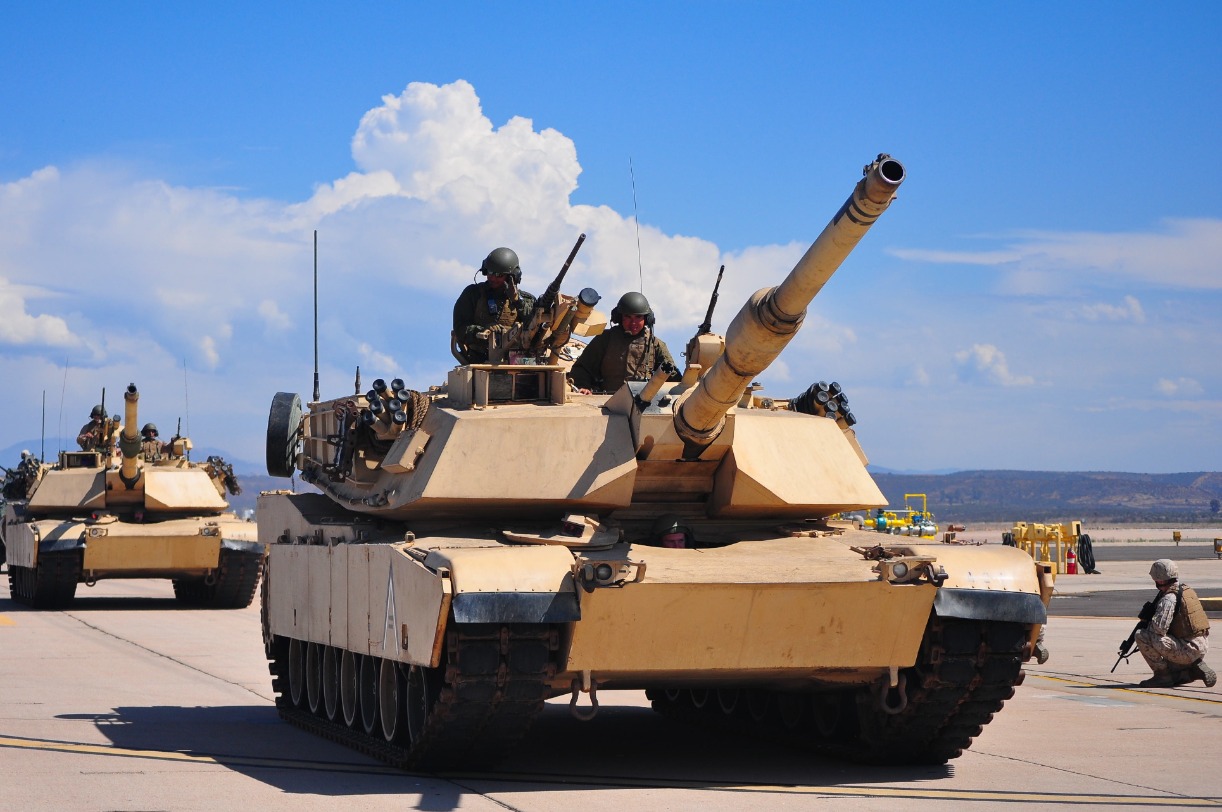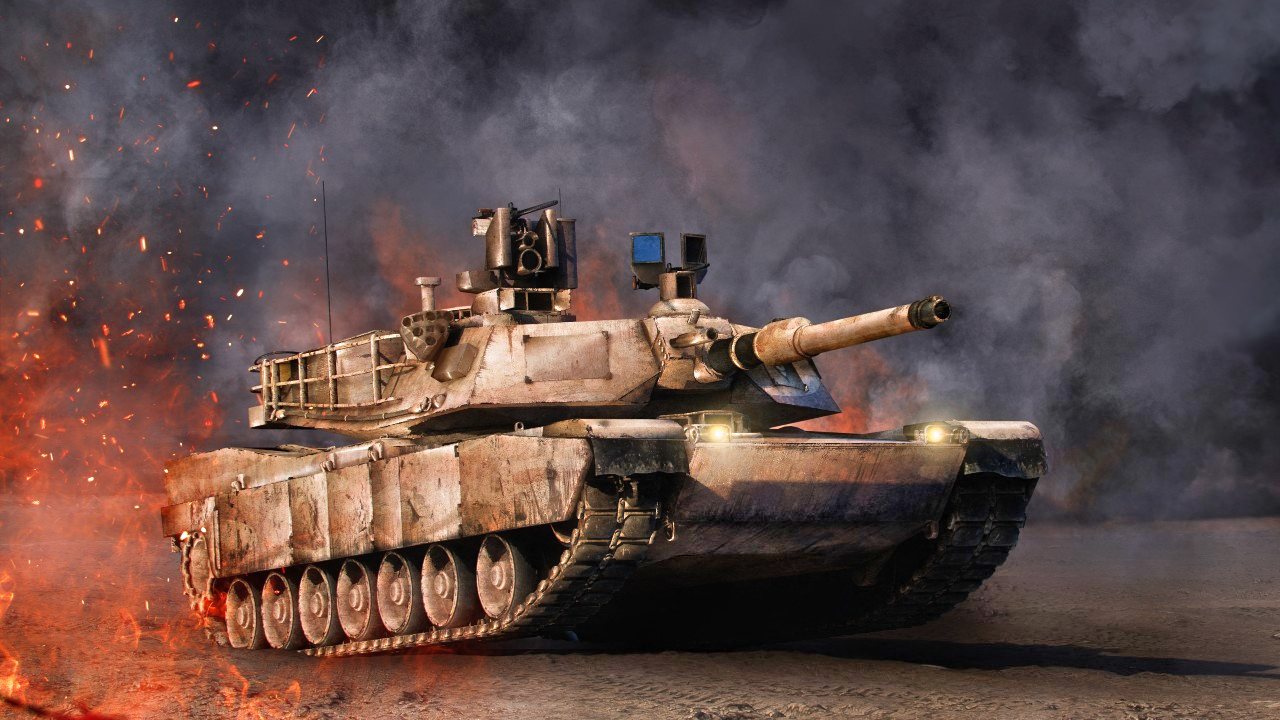'New' M1E3 Abrams: Best Tank on Earth or a Waste Billions of Dollars?
The U.S. Army is set to develop a new variant of the M1 Abrams main battle tank, the M1E3, to address modern combat needs while keeping costs in check.
Summary and Key Points: The U.S. Army is set to develop a new variant of the M1 Abrams main battle tank, the M1E3, to address modern combat needs while keeping costs in check.

-Instead of creating a completely new tank, the Army plans to reimagine the Abrams to be lighter, more survivable, and technologically advanced. Key features include a hybrid powertrain to reduce fuel consumption and increase stealth, a target weight reduction from 73 tons to under 60, and potentially an autoloader for increased efficiency.
-The M1E3 aims to incorporate new technologies to enhance lethality and protection, learning from recent conflicts like the war in Ukraine.
Lighter and More Lethal: The Army’s Next-Generation M1E3 Abrams
The U.S. Army is committed to building a newer, completely unique variant of its ubiquitous M1 Abrams main battle tank. Originally, the plan had been for the Army to create a completely new MBT from scratch. But the pressing geopolitical reality America faces everywhere, plus the costs involved in such a project, pushed the Army to rethink. Rather than build anew, they are re-imagining the Abrams MBT. According to Defense News, the Army’s M1E3 Abrams will be lighter and more survivable.
America’s newest Abrams will be highly technological as well.
Big Green Going Green?
The Army, “Big Green,” is going green.
Jen Judson of Defense News reports that the M1E3 Abrams will have “power trains that include hybrid capability” with the aim of achieving both “reduced fuel consumption as well as the desirable ilent watch and silent drive capabilities to better avoid detection.”
As the Army chides, though, the new MBT won’t be going green if the hybrid electric powertrain cannot reach high-dash speeds. (Its older brothers in the Abrams family can all breakout at very fast speeds for tanks).
But the decision to embrace a hybrid powertrain is not just about making the Abrams quieter and, therefore, more lethal on the battlefield. This is a byproduct of the Biden administration’s obsession with making everything green.
As I originally reported at The-Pipeline earlier this year, the White House is “forcing a transition away from dependable, affordable gas-powered military equipment toward unproven and undependable replacements” which will surely “sacrifice America’s military advantages for no military benefit.”
Interestingly, the U.S. Army is avoiding the pitfalls of an all-electric MBT by making the drive train a hybrid. Nevertheless, there is a growing group of defense experts who want to see the electrification of U.S. military combat vehicles and equipment. It remains to be seen whether the M1E3 would be a necessary transition away from purely gas-powered platforms to something else.
A hybrid engine does not need to be recharged like electric vehicles (EV) do. It is gas-powered with a feature allowing for it to run on electricity. Making an MBT quieter on the battlefield is always a positive.
Yet if this is used as a case study for transitioning the force to electric-powered combat vehicles, it’s going to lead us to a very bad spot.
Understanding Some of the Specs of the New Abrams Tank
The Army is keen on bringing the overall weight of the MBT down from 73 tons to under 60. U.S. Army Brig. Gen. Geoffrey Norman has detailed his vision of deploying the M1E3 around the same time as the new M30 Mechanized Infantry Combat Vehicle that’s currently being developed.
Gen. Norman described the goal of cutting the M1E3 by 13 tons as “a little aggressive” but he commended his team for being “pretty ambitious” with their designs.
The hybrid powertrain and the cuts in weight are believed to contribute to the M1E3’s potential high maneuverability, which is a key aspect of the Abrams family of MBTs generally. The Army believes it will make all the difference in modern combat.
An Autoloader to Hell?
Along with these changes, the Army wants to give the M1E3 a remote or optionally manned turret “in order to save the space under armor,” according to Norman. Other technologies are being matured to enhance the lethality of this armored land demon. An autoloader is under consideration.
The U.S. military long avoided using autoloaders in combat because of negative Soviet and Russian experiences with the technology.
Essentially, an autoloader is a system that mechanically loads and reloads the large ammunition into the main gun automatically. It requires less physical exertion from a crew already under duress in combat.
Further, an autoloader increases reload time and efficiency, enhancing a tank’s lethality against a tank that lacks an autoloader. At least that’s how they’re supposed to function on paper. In the hurly-burly of combat, however, the autoloaders can get off-track and stop working.
In the Soviet experience with autoloaders, once they’re off-track, it is impossible to manually load the shells into the main gun. The tank becomes combat-ineffective.
Previous iterations of U.S. Army MBTs avoided autoloaders for this very reason. Now, the Army has drunk the Kool-Aid (although there were plenty of instances throughout the Cold War when US Army designers tried—and failed—to incorporate the autoloader into their new tank designs). I’d venture a guess that future Army tankers will pay the price for this short-sighted decision by “pretty ambitious” Army designers.
Learning the Hard Lessons of the Ukraine War
When it comes to defense, the tank will possess an integrated active protection system, which would be part of the Army’s primary mission of better protecting vulnerable tank crews while in the heat of combat.
Left unsaid was how the tank would defend against the kind of threats that the Russian tank force has met in the Ukraine War.
Many burned-out hulls of Russian tanks line the countryside of Ukraine, thanks to the lethality of cheap Ukrainian drones. NATO-provided Javelin anti-tank missiles also made mincemeat out of the Russian tanks at the start of the war. While the Russians have adapted, Moscow still refuses to commit its most modern tank, the T-14 Armata, to the conflict. Even Russia’s T-90M, the next-most advanced MBT in Russia’s arsenal, is struggling due to Ukraine’s drone and anti-tank missile capabilities.
The Army Must Think Hard Before It Buys and Builds M1E3
Should a ground war involving the M1E3 light Abrams tank occur, what countermeasures will the tank possess (other than the automated turret)?
Directed Energy Weapons might be one technology the Army should rapidly mature to deploy aboard the M1E3 for use as counter-drone defense.
Otherwise, all this money invested in a new, lighter variant of the Abrams will be wasted.
The Abrams tank remains the best Western tank in existence. It was a smart move by the Pentagon not to try to build an entirely new tank, but rather to augment and re-imagine the existing Abrams. But if the Ukraine War has taught us anything, it is that the expectations of certain weapons systems rarely meet the reality of how they will perform in a modern combat environment.
Unless the Americans avoid the ideological assumptions of political leaders when designing the M1E3 and account for the kind of threats mentioned above, the new Abrams will be useless.

Author Experience and Expertise: Brandon J. Weichert
Brandon J. Weichert, a National Interest national security analyst, is a former Congressional staffer and geopolitical analyst who is a contributor at The Washington Times, the Asia Times, and The-Pipeline. He is the author of Winning Space: How America Remains a Superpower, Biohacked: China’s Race to Control Life, and The Shadow War: Iran’s Quest for Supremacy. His next book, A Disaster of Our Own Making: How the West Lost Ukraine, is due October 22 from Encounter Books. Weichert can be followed via Twitter @WeTheBrandon.
All images are Creative Commons or Shutterstock.
From the Vault
Russia Freaked Out: Why the U.S. Navy 'Unretired' the Iowa-Class Battleships
Battleship vs. Battlecruiser: Iowa-Class vs. Russia's Kirov-Class (Who Wins?)


